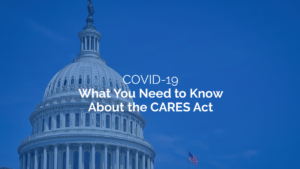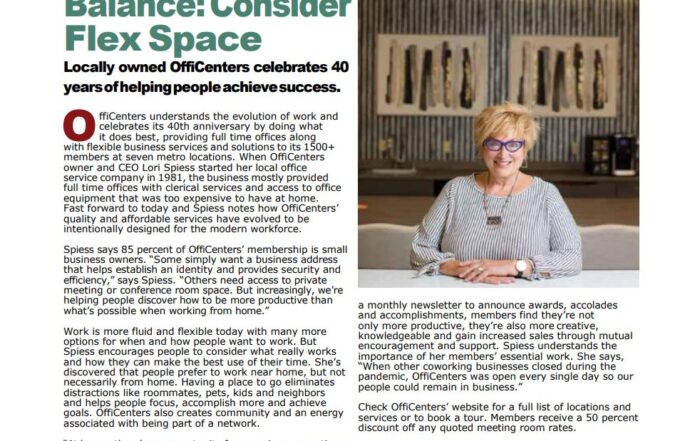COVID-19 Business Resource Page
 On Friday March 27, the President signed the Coronavirus Aid, Relief, and Economic Security (CARES) Act, a $2 billion economic stimulus package (largest in US history) that includes assistance programs designed for businesses. Below are some of the highlighted program offers.
On Friday March 27, the President signed the Coronavirus Aid, Relief, and Economic Security (CARES) Act, a $2 billion economic stimulus package (largest in US history) that includes assistance programs designed for businesses. Below are some of the highlighted program offers.
Paycheck Protection Program Loans
Applications for the loan will go live on Friday, April 3rd for small businesses and sole proprietorships and on Friday, April 10 for independent contractors and self-employed individuals. Applications will be open until June 30, though we encourage you to apply as quickly as possible because there is a funding cap. For small businesses, these loans are likely going to be the fastest form of financial assistance in the CARES Act. Here are the basics:
- $349 billion is available to small businesses
- 0.50% fixed interest rate initially that may rise (capped at 4%)
- No loan payments required 6 months from the loan issue date.
- Loan will need to be paid back in 2 years
- No personal guarantees required, no requirement to prove that you cannot obtain credit elsewhere, and will be low fee.
- Most importantly, a portion of this loan could be forgiven by the government if you retain your staff and use the funds toward covered purposes – in this sense, this is essentially a grant, from the government to your business.
Eligibility: The law is intended to impact as many companies as possible, so there are relatively few restrictions regarding eligibility. What we know:
- You must be a business with less than 500 employees.
- You must have business expenses that are covered by the loan (these including payroll, rent, mortgages, utilities, and debt obligations. These obligations must have been made before February 15th so rent on a lease signed after February 15th would not be considered an eligible expense)
Total loan amount: the loan size that your business is eligible for is equal to two times your average monthly payroll costs from the last year plus an additional 25% to cover other eligible expenses (based on the March 31 Treasury Guidance). The maximum loan amount is $10 million. Payroll costs include:
- Salary, wages, commissions, or tips capped at $100,000 annually per employee
- Cost of employee benefits including costs leave
- State and local taxes assessed on compensation.
The government will forgive a portion of the loan equal to payroll costs, mortgages, rent and utilities forthe eight weeks following loan origination if you retain your workforce. How this will work:
- When the loan is due, you’ll owe anything above and beyond what you spent on payroll, mortgage interest, rent and utilities for the 8 weeks after getting the loan. However, 75% of that must be payroll expenses.
- This forgiven amount will be decreased proportionately to any headcount reductions you make that are not reversed before June 30. Current headcount will be compared to the average number of people employed for each pay period over the last 12 calendar months, regardless of hours worked or temporary status. This calculation is different for new and seasonal businesses.
- Additionally, it will be decreased dollar for dollar by any salary decrease greater than a 25% reduction in compensation for employees that make up to $100,000.
How the application will work: Businesses will be able to apply for these loans through approved SBA lenders beginning on April 3rd, 2020. Many commercial banks are already approved SBA lenders, including ones that you might work with already for bank accounts or credit cards.
In addition to your application, banks may require businesses to self-certify that:
- The loan is necessary to support business continuity given economic uncertainty.
- You’ll use the funds to retain workers and maintain payroll or to make mortgage, lease, and utility payments.
- You have not and will not receive another loan under this program.
- Information you have provided in the application and supporting documents is accurate.
- You affirm that the tax documents are identical to those you submitted to the IRS, and acknowledge that these can be shared with the SBA.
What other assistance to businesses is available
The CARES Act includes a number of other provisions that are of interest to businesses:
- $27 billion in funding for emergency grants, to aid in servicing existing SBA loans.
Tax relief and write-offs are available to businesses, including the deferral of certain payroll tax payments until 2021. - $454 billion is set aside for business relief through the Treasury department. Note, the process to obtain these funds and eligibility is more opaque than the process to obtain the SBA loans. Much of this fund is allocated to specific industries such as airlines. In addition to industry specific funds, one program to obtain this funding will be the mid-sized company loan program, for those with 500-10,000 employees, to get low-interest (less than 2%) loans, with no payments due for six months. These loans do have some restrictions – you must retain 90% of your workforce, and there are limitations after you’ve received the loan.
This information is meant for informational purposes only and is not meant to replace the advice of attorneys or advisors.




